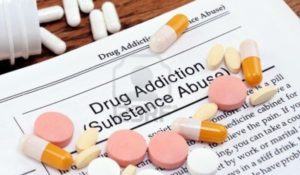 In the face of a worsening epidemic of opioid abuse in this country, legislators and addiction experts are calling for a shift in the way we view and treat addiction, and an increase in medication-assisted treatment plans.
In the face of a worsening epidemic of opioid abuse in this country, legislators and addiction experts are calling for a shift in the way we view and treat addiction, and an increase in medication-assisted treatment plans.
Currently, most addiction treatment programs – such as the well-known 12-step program – involve a combination of abstinence, social support and therapy. Proponents of this method tend to advocate against the practice of replacing abuse of one drug with dependence on another. But with evidence pointing to the incredible efficacy of using drugs to help addicts recover, the push to make that option more widely available is a key component of the Obama administration’s fight against the opioid addiction epidemic.
Medication-assisted treatment
Deaths from opioids quadrupled in the United States between 2002 and 2013, and in the past decade, heroin use among people aged 18-25 has doubled. Past efforts to curb the abuse have been largely unsuccessful.
Several medications – namely buprenorphine, methadone, and naltrexone – have been shown to be enormously helpful in treating addiction. But unfortunately, less than half of the 2.5 million Americans who might benefit from medication-assisted treatment actually receive such treatment, according to the Substance Abuse and Mental Health Services Administration (SAMHSA).
Buprenorphine (often sold as the brand name Suboxone) is one of the most effective anti-addiction medications; as a partial agonist, it binds to opioid receptors but doesn’t activate them to the extent that heroin and other addictive opioids do. In order to prescribe buprenorphine, doctors must undergo special training.
Methadone, the most common anti-addiction medication, is a full agonist like heroin, which makes it a better option for more severe addicts that take higher drug doses. It’s tightly regulated; only clinics with government approval can prescribe it. Since both buprenorphine and methadone have long half-lives, they prevent the extreme peaks and troughs caused by opioids with short half-lives. These peaks and troughs are responsible for overdose and withdrawal symptoms; maintaining a steady level of the drug in the body and preventing those swings can alleviate symptoms and prevent addicts from reaching for other opioids.
Naltrexone, another medication used in addiction treatment, blocks opioid receptors and prevents the body from responding to opiates. Since it does not activate opioid receptors, it does not cause the “high” that addictive opiates do. Naltrexone is a good choice for less severe addicts who wish to detoxify rapidly.
Government efforts
Only 30,000 doctors in the country can prescribe these medications, and each one can only prescribe to 100 patients. In addition to declaring that he will allocate more funds to states to expand medication-assisted treatment programs, President Barack Obama proposed raising that number to 200.
California is in the process of dramatically transforming its addiction treatment programs for low-income residents. The shift in thinking emphasizes that addiction is a chronic illness, and that there is a role for medication in the treatment process.
Marlies Perez, chief of substance abuse disorder compliance division for state Department of Health Care Services, argues that medication can make a huge difference in severe addiction cases, and is the “gold standard” for helping addicts recover. The proven power of medication-assisted treatment is drawing the attention of doctors and politicians, and inspiring the formation of collaborations such as the Medication-Assisted Recovery Services (MARS) project, a joint effort between the National Alliance of Methadone Advocates (NAMA) and the Albert Einstein College of Medicine Division of Substance Abuse.
Proponents of the 12-step approach, however, argue that replacing one drug with another is not the same as the true recovery addicts achieve through abstinence. But for those for whom abstinence doesn’t stick, the medications can be life-changing.
John Connolly, deputy director for substance abuse prevention and control for the Los Angeles County Department of Public Health, concedes that medication should not be the only treatment given to addicts; it should be used in combination with traditional treatment methods like counseling and social support. More access to these evidence-based medication-assisted treatments, however, is vital for severe addicts that have been unsuccessful with attempted abstinence and therapy alone.
As the death toll from drug overdose rises, we need increased awareness about the importance of medication-assisted treatment and its potential to help curb this epidemic. Unfortunately, the Legal Action Center reports that Medicaid programs in at least 17 states do not cover long-term methadone treatment; funding this type of therapy could present a significant challenge, but one that we must address if we wish to help addicts recover for life without relapse.
For more information/questions regarding any legal matters, please email [email protected] or call 310.203.2800.